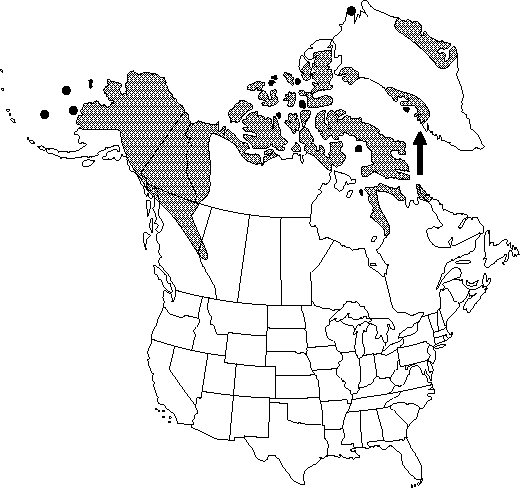Ranunculus nivalis
Sp. Pl. 1: 553. 1753.
Stems erect from short caudices, 4-22 cm, glabrous or sparsely pilose, each with 1 flower. Roots slender, 0.4-0.8 mm thick. Basal leaves persistent or deciduous, blades reniform, 3-parted, 0.6-2 × 1.3-3 cm, at least lateral segments again lobed or margins toothed, base truncate or cordate, apices of segments rounded-apiculate. Flowers: pedicels glabrous or brown-pilose; receptacle glabrous; sepals 6-8 × 3-5 mm, abaxially densely brown-hispid; petals 5 (-6), 8-11 × 7-12 mm; nectary scale glabrous. Heads of achenes cylindric or ovoid-cylindric, 7-14 × 5-6 mm; achenes 1.5-2.2 × 1.2-1.6 mm, glabrous; beak slender, straight, 1-2 mm. 2n = 48.
Phenology: Flowering late spring–summer (Jun–Aug).
Habitat: Wet or dry alpine meadows, often around late snowbeds, cliffs, and streamsides
Elevation: 0-1300 m
Distribution

Greenland, Alta., B.C., Nfld. and Labr. (Nfld.), N.W.T., Que., Yukon, Alaska, Eurasia
Discussion
Selected References
None.